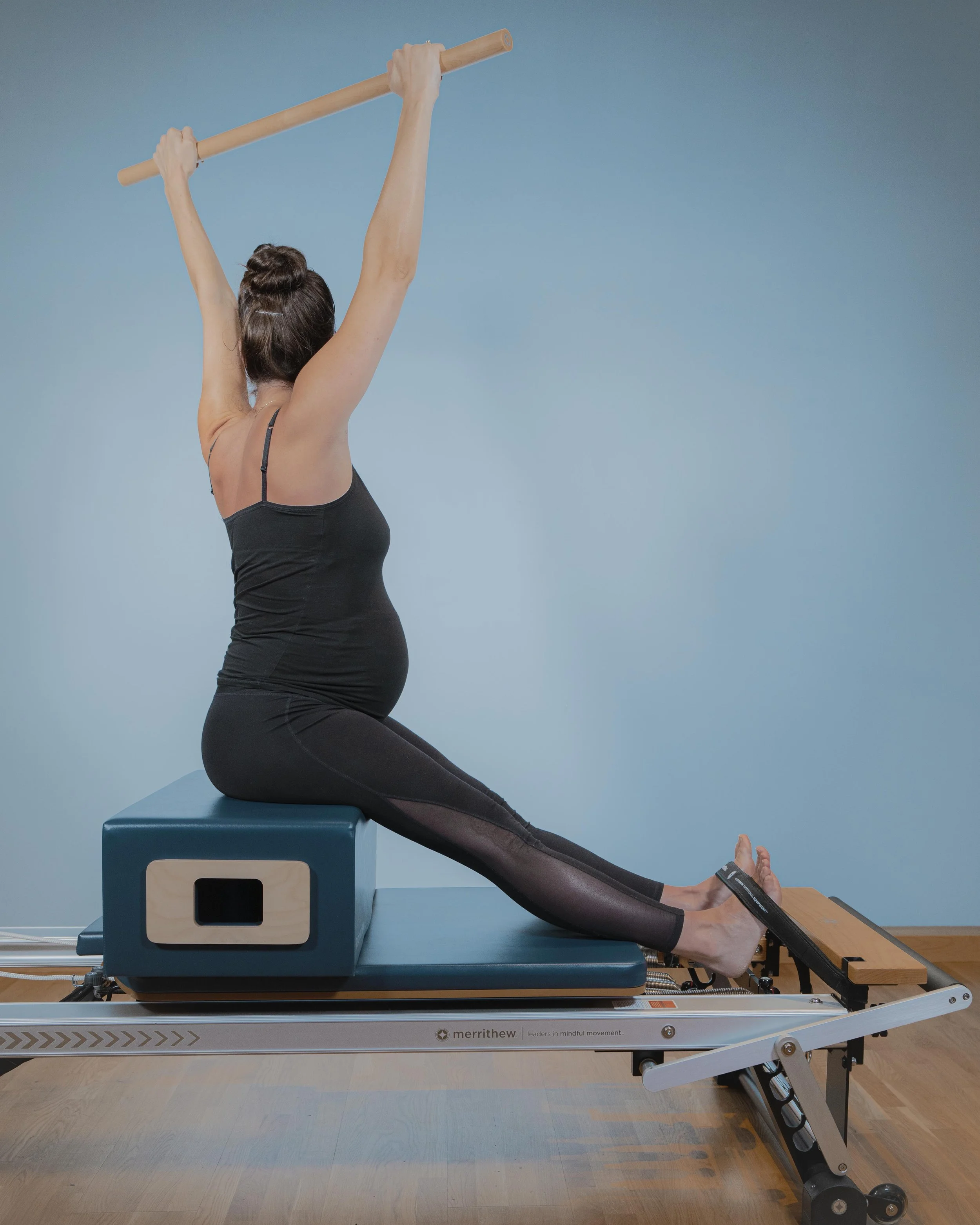Pilates and Pregnancy
Experts agree that regular exercise is essential for the mental and physical well-being of expectant mothers. Pilates—whether you're a beginner or experienced—is considered one of the best forms of prenatal exercise. If there are no complications, it can be safely practiced throughout all stages of pregnancy. It's low-impact, and the exercises can be easily modified to accommodate the many physical changes that occur during this time.
During pregnancy, the body undergoes rapid changes. Your stomach stretches, contact with your abdominal muscles begins to fade, you feel heavier and more weighed down by your growing belly, and standing up straight becomes more difficult. Your center of gravity shifts, and spinal mobility decreases. Breathing may also become harder due to an increased heart rate, higher blood volume, and the growing baby pressing against your rib cage.
Fortunately, Pilates can help manage many of these challenges.
Some Key Benefits of Practicing Pilates During Pregnancy:
1. Pilates Builds Strength to Support Pregnancy, Birth, and Postpartum
Pilates focuses on deep core muscles, including the transverse abdominis and the pelvic floor. Strengthening these muscles helps support your growing belly, reduces lower back and pelvic pain, and provides stamina for labor. It also strengthens the legs and arms—especially helpful postpartum, when you're regularly lifting and carrying your baby.
2. Pilates Reduces Pain
Pregnancy often brings aches and pains, especially in the back and pelvis. The hormone relaxin increases during pregnancy, softening ligaments and expanding the pelvis to prepare for delivery. Pilates can help reduce pain by strengthening your core and the stabilizing muscles around the hips and pelvis, as well as incorporating dynamic stretching.
3. Pilates Enhances Breath Awareness
Pilates emphasizes controlled breathing, which can be beneficial during labor. Posterior lateral ribcage breathing, a Pilates technique, expands the ribcage and creates more space for your growing baby. Focusing on breath can also reduce tension and anxiety.
4. Pilates Increases Mobility
Pilates exercises move the spine through various planes—flexion, extension, lateral bending, and gentle rotation. This emphasis on mobility can prevent pain during pregnancy and aid in postnatal recovery.
5. Pilates Improves Posture and Balance
As your belly grows and hormones shift, your sense of balance changes. Pilates improves posture, body alignment, coordination, and overall body awareness—helping you feel more stable and in control.
6. Pilates Reduces Stress and Supports Emotional Well-Being
Regular movement and focused breathing are vital to your emotional health during pregnancy. Pilates meets your body where it is, addressing physical and emotional needs at every stage of pregnancy.
Pregnancy Pilates at Kjernekraft
At Kjernekraft, we warmly welcome pregnant women. Our reformer/apparatus classes are limited to just four participants, ensuring personalized attention. We use the full range of Pilates equipment, allowing us to modify exercises to suit each stage of pregnancy.
No prior Pilates experience is necessary. However, we ask all expectant mothers to attend at least two introductory sessions before joining a group class. This allows us to get to know you and your body, and for you to become familiar with the exercises and equipment.
Many of our clients continue training with us right up to the end of their pregnancy. They often report shorter, easier labors and faster postnatal recovery.
Have you had a positive experience doing Pilates during pregnancy?
We’d love to hear about it—share your story below!

